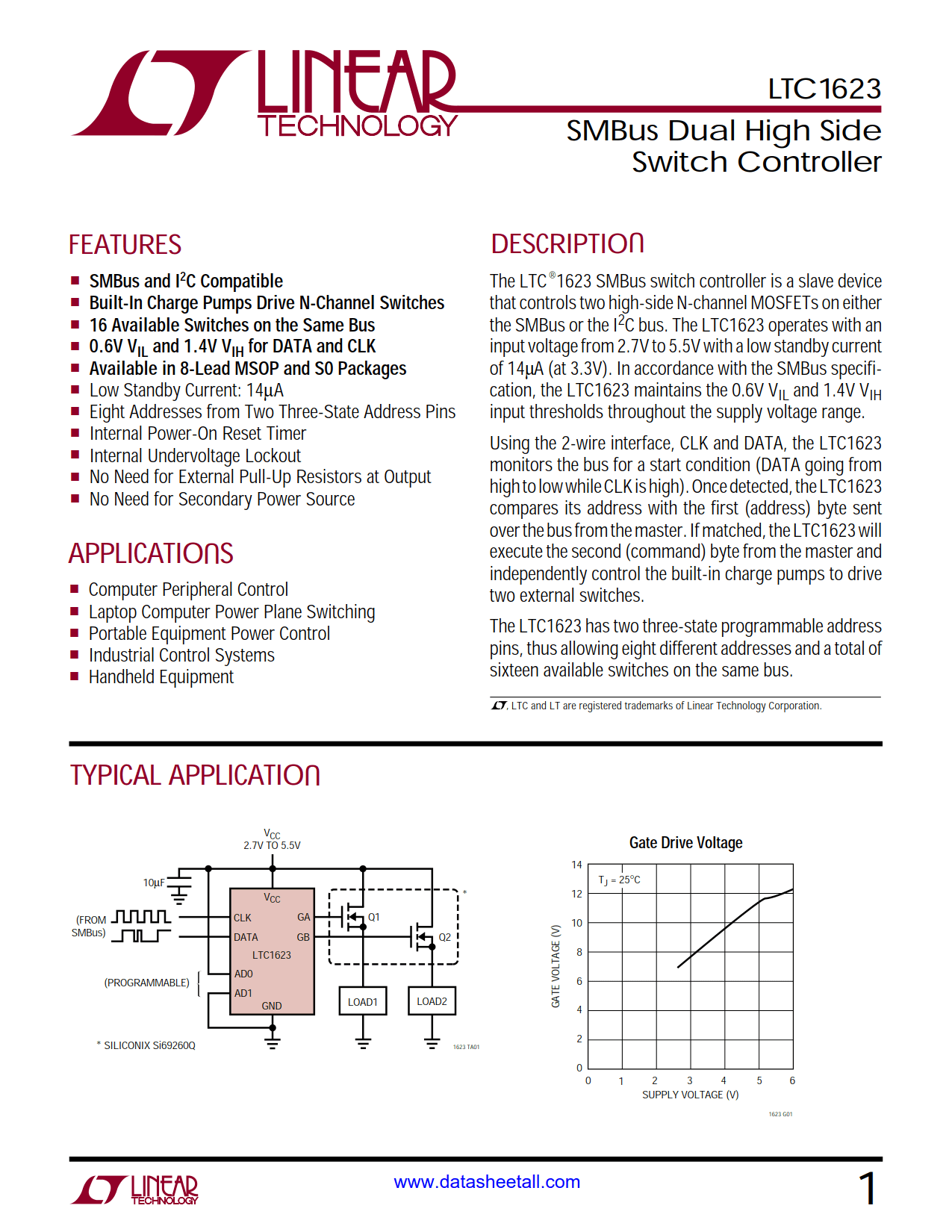
LTC1623 Datasheet
SMBus Dual High-Side Switch Controller

SMBus Dual High-Side Switch Controller
| Part No. | In Stock | Price | Packaging | SPQ | Marking | MSL | Pins | Temp Range | Package Description |
The LTC1623 SMBus switch controller is a slave device that controls two high-side N-channel MOSFETs on either the SMBus or the I2C bus. The LTC1623 operates with an input voltage from 2.7V to 5.5V with a low standby current of 14µA (at 3.3V). In accordance with the SMBus specification, the LTC1623 maintains the 0.6V VIL and 1.4V VIH input thresholds throughout the supply voltage range.
Using the 2-wire interface, CLK and DATA, the LTC1623 monitors the bus for a start condition (DATA going from high to low while CLK is high). Once detected, the LTC1623 compares its address with the first (address) byte sent over the bus from the master. If matched, the LTC1623 will execute the second (command) byte from the master and independently control the built-in charge pumps to drive two external switches.
The LTC1623 has two three-state programmable address pins, thus allowing eight different addresses and a total of sixteen available switches on the same bus.